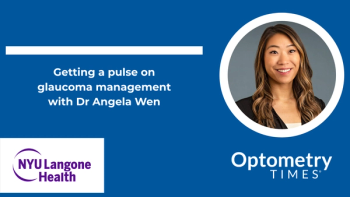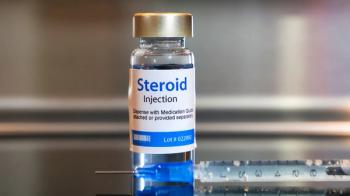
- Vol. 11 No. 1
- Volume 11
- Issue 1
Sleeping position may cause increased glaucoma risk
I have a positive family history of glaucoma. I also sleep with a pillow. I don’t know exactly how my head is positioned on the pillow during the night because I’m sleeping. My positive family history, increasing age, and myopia make me at an increased risk for glaucoma.1
With that said, am I at an increased risk for glaucoma because of how I lay on my pillow? A recent study published in Acta Ophthalmologica led me to ponder this very question.2
Research
In this prospective case-control study, investigators sought to determine whether turning one’s head into a pillow leads to a clinically significant increase in intraocular pressure (IOP).
They also sought to determine if protective eye shields had any effect on this occurrence. Eleven patients with primary open-angle glaucoma and 11 controls participated in the study.
An epipalpebral sensor was attached to the right eyelid of all patients. The probable relationship between epipalpebral pressure and IOP was calibrated by increasing epipalpebral pressure at stepwise increments and simultaneously measuring IOP by means of Goldmann applanation tonometry at a slit lamp.
The study participants then simulated a sleeping position with their heads turned into a pillow. Epipalpebral pressure was measured through the upper eyelid, and IOP was estimated based on the patients’ previous calibrations.
Patients completed the study both with and without protective glasses to determine if shielding their eyes from the pressure from the pillows had any tangible effect on IOP.Results
The average IOP while in the simulated sleeping position increased by over 19 mm Hg in the study participants with glaucoma and by 28 mm Hg in the control group-both groups without protective glasses.
When study participants wore the protective glasses in the simulated sleeping position, their estimated IOP was comparatively decreased by over 16 mm Hg in the glaucoma group and over 25 mm Hg in the control group.
Investigators concluded that wearing protective eye glasses while sleeping may be a treatment option for glaucoma.
Study researchers found a significant difference in IOP in the form of an increase from the induction of pressure by a pillow and the relative decrease from wearing protective glasses while simulating sleep.
Of note, with 11 glaucoma patients and 11 controls, the sample size of this study is quite small. More and larger-scale studies are needed to prove that one’s position on a pillow can have such a substantial effect on IOP.
However, the results make sense. Combine this notion with the fact that IOP tends to be higher when one is in the supine position and the need to not only reduce IOP but also to lessen diurnal IOP variation becomes apparent. 3
Further examination
This is not the only study to examine such an effect on IOP. A prospective trial conducted at the John Hopkins Wilmer Eye Institute and published earlier this year found that wearing a protective mask reduced limbal strain in patients sleeping with one side faced down on a pillow.4
Investigators also found that certain facial features, including a longer length from one’s corneal apex to the tip of one’s nose, were associated with less limbal strain.
Another study published in 2014 looked specifically at head position while sleeping and its potential effect on IOP.5
In this study, investigators sought to determine if sleeping with one’s head at a 20-degree upward tilt would lower nocturnal IOP relative to laying with one’s head in the supine position.
Some 15 glaucoma patients and 15 controls were included, and 25 of the 30 participants had lower mean IOPs when sleeping with the upward head tilt.
Of those 25 participants, 11 had >10 percent reductions in IOP due to the head tilt. There was no significant difference in these results between the glaucoma and control arms of the study.
Future of glaucoma treatment
It may seem far-fetched for an eye doctor to one day prescribe patients a protective sleep mask to be worn chronically for the treatment of glaucoma.
However, with the incidence of moderate to severe obstructive sleep apnea being reported at 10 to 20 percent, many patients may already be used to sleeping with a therapeutic device on their faces.6
Studies such as these point to the fact that glaucoma treatment is becoming more and more individualized-as it should. Different patients respond to different therapies in different ways.
Exploring these diverse approaches will give us the means of having a better understanding of how IOP behaves outside of our office hours as well as the means to act on that information.
References:
1. Ahmad SS. Glaucoma suspects: a practical approach. Taiwan J Ophthalmol. 2018 Apr-Jun;8(2):74-81.
2. van Meurs IA, Thepass G, Stuij AA, Bollemeijer JG, Lemij HG. Is a pillow a risk factor for glaucoma? Acta Ophthalmol. 2018 Dec;96(8):795-799. doi: 10.1111/aos.13881. Epub 2018 Oct 8.
3. Kothe AC. The effect of posture on intraocular pressure and pulsatile ocular blood flow in normal and glaucomatous eyes. Surv Ophthalmol. 1994 May;38 Suppl:S191-7.
4. Flatau A, Solano F, Jefferys JL, Damion C, Quigley HA. A protective eye shield reduces limbal strain and its variability during simulated sleep in adults with glaucoma. J Glaucoma. 2018 Jan;27(1):77-86.
5. Lazzaro EC, Mallick A, Singh M, Reich I, Elmann S, Stefanov DG, Lazzaro DR. The effect of positional changes on intraocular pressure during sleep in patients with and without glaucoma. J Glaucoma. 2014 Jun-Jul;23(5):282-7.
6. Chung AS, DiGiovanni R, Tseng S, Hustedt JW, Chutkan N. Obstructive sleep apnea in elective spine surgery: national prevalence and inpatient outcomes. Global Spine J. 2018 Sep; 8(6): 550–556.
Articles in this issue
almost 7 years ago
Know how to comanage MIGS patientsalmost 7 years ago
How to overcome barriers when buying or selling a practicealmost 7 years ago
Make one decision per week to improve the practicealmost 7 years ago
How to improve glaucoma referralsalmost 7 years ago
Spectacle lenses offer relief for headaches, ocular symptomsalmost 7 years ago
How to recognize and manage digital eye strainNewsletter
Want more insights like this? Subscribe to Optometry Times and get clinical pearls and practice tips delivered straight to your inbox.
















































.png)


